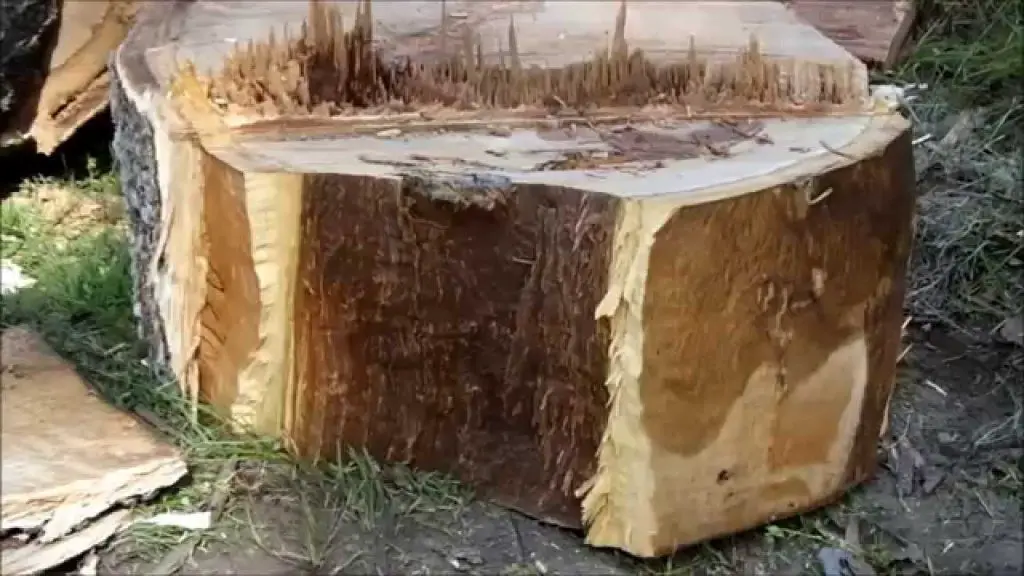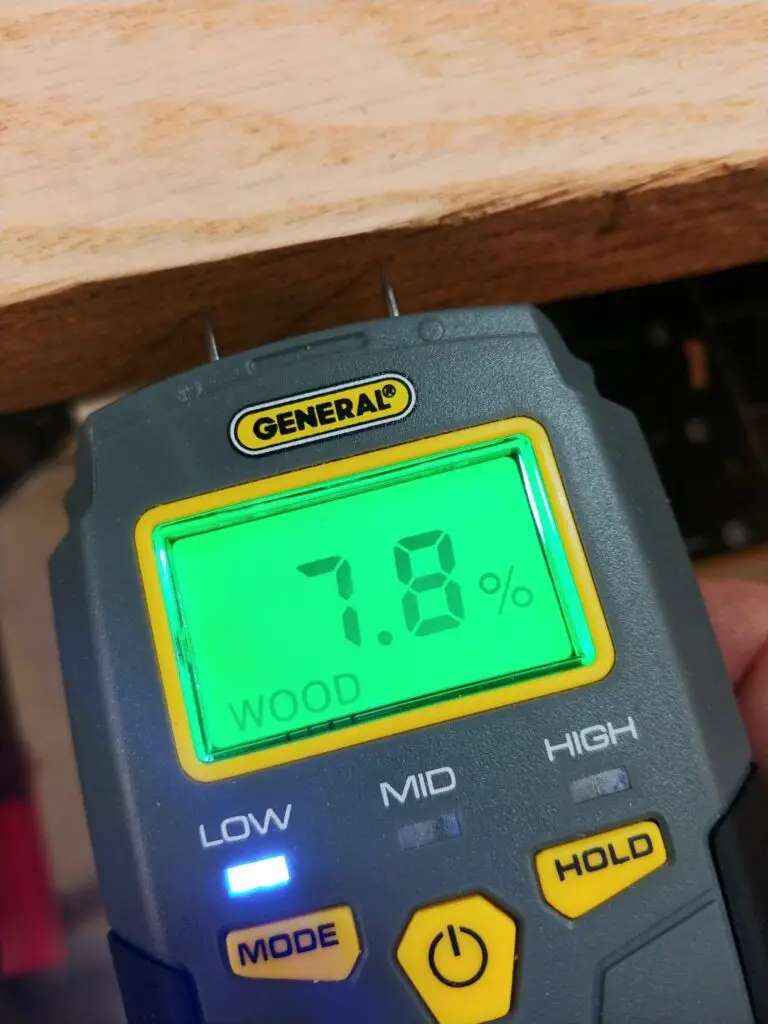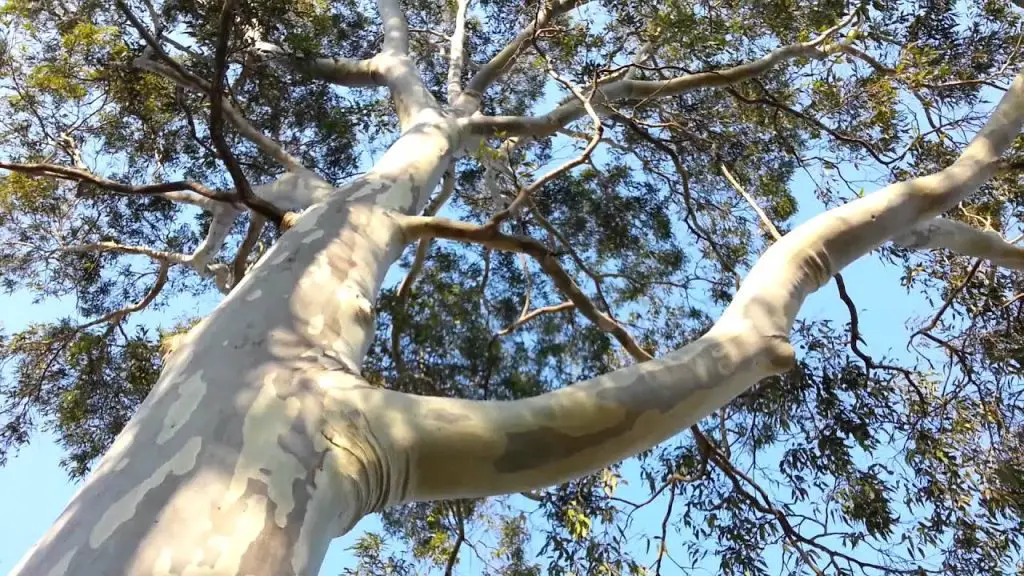Eucalyptus firewood is excellent firewood with high heat output, a wonderful smell, and produces good coals.
You would think we would hear about eucalyptus as the top firewood choice with all of these fantastic qualities. So why haven’t we?
First, some believe that the smoke of eucalyptus wood is poisonous. This is a fallacy and should not stop you from using eucalyptus firewood.
Second, the wood does spark quite a bit. However, if you use safe fire practices such as using a screen or glass door inside, this will not be a problem for you. Some even fall in love with the sound of the popping wood, and it can become a comfort.
Last, eucalyptus firewood is challenging to find compared to other types of hardwoods. Specifically, eucalyptus does not grow in the central U.S. or the northeastern states.
However, if you have access to eucalyptus wood, absolutely take advantage of it and add it to your firewood pile.
Table of Contents
Summary
- BTU: 34.5 million BTUs per cord
- Weight: 7320 Ibs. Green
- Seasoning Time: 18-24 months
- Splitting Difficulty: Difficult
- Sap Content: Low
- Smoke: Low
- Smell: Sweet and medicinal
Eucalyptus is native to Australia but has spread into different parts of the world, especially into the Western parts of the United States. It is among the highest density hardwoods and burns remarkably similar to oak.
You may have seen eucalyptus oil in soaps, aromatherapy, and insect repellents. The oil of the eucalyptus tree has many uses, and the wood and leaves contain a high amount of it.
Eucalyptus is also referred to as the gumtree and grows incredibly fast.

Heat Production
Eucalyptus firewood produces an astounding amount of heat and is among the highest BTU rating firewood.
There are many different types of eucalyptus, and each of their BTUs is different, so it’s hard to put an overarching number to eucalyptus. However, the average BTU ratings are 34.5 or higher.
The firewood burns hot and has a powerful flame, although it may be challenging to get started. Eucalyptus can definitely be used as a primary heating source.
Once started, eucalyptus firewood will produce an excellent bed of coals. The coals are great for keeping warm all night long or cooking. Very little ash will be left behind from a eucalyptus fire.
Smoke Production
After being patient through the very long seasoning time, smoke should not be an issue with eucalyptus firewood.
However, you will have popping and sparking. Even after seasoning, there are still pockets of oil trapped in the wood, which will cause your logs to spark.
While you should always use a screen or glass doors when burning inside, firewood that produces fewer sparks is safer. Wood that sparks heavily can create significant fire hazards. You will need to be mindful of this when burning eucalyptus.
Seasoning Time
Seasoned wood has a moisture content of less than 20 percent. Firewood with a higher moisture content than 20 percent is harder to light and frustrating to burn. It also produces more smoke and creosotes buildup.
Green eucalyptus has a high moisture content because of the oil in its wood. So while it has a low sap content rating, it has a high oil rating.
Because of all of this oil, it will take you 18-24 months to properly season your eucalyptus firewood. Eucalyptus firewood is not safe to burn inside until properly seasoned.
Remember, seasoning time depends on where you live, what climate your wood is exposed to, and how you stack your wood. Wood will season quicker in dryer climates.
I personally recommend this General Tools Moisture Meter. It allows you to accurately gauge how wet your firewood is and whether it is sufficiently seasoned. Over time you can also see how quickly the moisture is dropping and how much longer you need to keep your firewood dropping until it is seasoned and ready to burn.
Press the sharp pins into the wood and you will quickly see the readout show the moisture ranging from 5% to 50%. It also has a Low/Mid/High indication depending on whether the wood is dry enough, so you don’t need to remember the actual values.

Burning Smell
Eucalyptus has a delightful smell that will remind you of Vicks VapoRub, which smells sweet and slightly medicinal to most. The scent will not be overwhelming, and most enjoy the fragrance of the wood.
However, there are plenty of people who cannot dissociate those two smells and complain that Eucalyptus firewood stinks of medicine, which can ruin the experience.
Creosote Buildup
Creosote is a dark brown tar deposited from wood smoke that can build up on the insides of your chimney walls. It contains tiny unburned particles of wood and sap found in smoke. Creosote can be extremely dangerous because of how flammable creosote is and will quickly start a chimney fire. Firewood with higher levels of sap will create more creosote.
As stated before, the sap content for the eucalyptus tree is very low, and in fact, certain types of eucalyptus trees have no sap at all.
Burning eucalyptus firewood is clean and easy if you season it for long enough. If you do not season your eucalyptus firewood for long enough, the risk of creosote buildup goes up significantly because of the extra oils in the wood.
Ease of Splitting
Splitting eucalyptus firewood is the most considerable disadvantage to the wood because it is challenging.
Because the wood fiber of the eucalyptus tree can be very stringy, your best chance of splitting eucalyptus is to do so before seasoning. The grains of the firewood will start to twist around as they dry out. Once it’s seasoned, it will be almost impossible to split.
After you cut eucalyptus, wait 5-7 days to let some oils and moisture leave the wood. After the one week is over, this is your best chance of splitting eucalyptus by hand.
Some say it is best to slice the firewood into rings and allow them to season without splitting first. The rings will start to crack and split by themselves and are intended to be used without manual splitting at all.
A hydraulic wood splitter is the easiest method of splitting your eucalyptus firewood.
Different Types/Species
Eucalyptus trees are native to Australia and the main food source for koalas. There are over 700+ species of the eucalyptus tree and almost all of those are within Australia’s borders.
Eucalyptus is a hardwood tree that belongs to the Myrtaceae family. Eucalyptus trees are fast-growing and make for a great tree in fire-prone areas because they will sprout back strongly after being burned. This makes it a great tree for the southwestern United States and can be found in states such as California, Texas, Florida, and other southern states.
All eucalyptus trees share similarities such as their shaggy bark which peels off either year-round or seasonally. They also all have cup-like flowers that are similar to nuts. They have blue-green leathery leaves that you’ve seen in pictures with koalas.
Even without being cut, the eucalyptus tree gives off an intensely sweet, minty, and spicy smell. This smell comes from eucalyptol, a chemical compound found in the leaves and wood of the tree. Eucalyptol is the oil that is extracted for medicinal properties because it kills bacteria and microbes.
There are two different categories of eucalyptus trees – Mallee, which is short and bushy, and Tree-like eucalyptus.
It would be unnecessary to list out all 700+ eucalyptus species here in this article, but here are the most common eucalyptus trees found in the U.S.

Southern Blue Gum – Eucalyptus Globulus
Southern blue gum trees are among the tallest tree species in the world and can reach heights of 300 feet. This is the most common eucalyptus tree found in California because they are extremely drought tolerant, thrive in nutrient-poor soils, and are fast-growing.
Cider Gum – Eucalyptus Gunnii
The cider gum tree is one of the most cold-hardy eucalyptus trees and is native to higher elevations in Australia. It can be found in the British Isles and can tolerate drought.
Snow Gum – Eucalyptus Pauciflora
Snow gum is a smaller tree and grows in a gnarled manner. It can withstand colder climates.
Silver Dollar Gum – Eucalyptus Polyanthemos
This is the eucalyptus that you typically see at the florist’s shop. It has rounded leaves that are gray and silver-white in color and look like 50-cent pieces. These are the second most common eucalyptus found in California and are even considered invasive to some areas.
Red Gum – Eucalyptus Camaldulensis
Red gum was planted heavily along waterways in southern California and is fairly weak. It is recommended to avoid parking under red gum trees during a windstorm.
White Peppermint – Eucalyptus Pulchella
This eucalyptus tree gets its name from its stunning white bark and incredibly thin leaves.
Spider Gum – Eucalyptus Conferruminata
Spider gum trees are small and have beautiful flowers. The flowers resemble koosh balls – those rubber balls with all of the strands radiating from the middle.
Blue-Leaved Mallee – Eucalyptus Polybractea
This mallee is most commonly planted in Australia in an effort to re-forest. The root systems of blue-leaved mallees are made of large tubers that do great in drought and in landscapes that frequently burn. The blue-leaved mallee trees are also the most commonly used for the essential oil industry because 90% of the tree is Eucalyptol.
Mountain Gum – Eucalyptus Dalrympleana
The mountain gum tree is stunning because of its pure white bark that does not strip, unlike other eucalyptus trees.
Rainbow Gum – Eucalyptus Deglupta
Rainbow gum comes from its incredible multi-colored rainbow bark. It will only grow in Florida, Hawaii, and Puerto Rico and is one of the tallest trees, reaching heights of over 200 feet.
Omeo Gum/Big O – Eucalyptus Neglecta
Omeo gum is the most cold-hardy eucalyptus mallees that can grow in the U.S. It has round leaves and is similar to a silver dollar gum.
Candlebark – Eucalyptus Rubida
Similar to the omeo, candlebark is extremely hardy but is a full tree that will withstand deep frosts. When the bark of candlebark shears off, it leaves behind pink-red bark below.
Willow-Leafed Peppermint – Eucalyptus Nicholii
The willow-leafed peppermint tree is commonly found in California and is even considered invasive in some areas. However, this tree is now endangered in Australia, where conservationists are working to save this tree.
Comparison to Other Woods
Here, I’ve taken some of the most popular firewoods to burn indoors and compared them to eucalyptus firewood.
| Firewood | BTUs | Ease of Splitting | Coals | Overall Quality |
| Green Ash | 20.0 | Easy | Good | Excellent |
| Maple | 25.5 | Easy | Excellent | Excellent |
| Bur Oak | 26.2 | Easy | Good | Excellent |
| Eucalyptus | 34.5 | Difficult | Excellent | Good |
Because it is difficult to find in many areas, is hard to split, and has a very long seasoning time, eucalyptus has a mixed reputation. It has as many negatives to its positives as having very high heat output and great burning qualities.
Frequently Asked Questions
Is eucalyptus firewood poisonous?
It is a common misconception that burning eucalyptus firewood is dangerous or poisonous. The poisonous part of the eucalyptus tree is if you ingest a large number of its leaves. If you were to do this, you would experience stomach pain, dizziness, and nausea. As long as you don’t burn the leaves, you don’t need to worry about any dangers.
Is eucalyptus safe to burn inside?
Yes, but use a fire screen or glass doors when burning inside to avoid house fires from popping wood. Ensure your eucalyptus wood is completely seasoned before burning inside.
How much does it cost to buy eucalyptus?
It will cost you around $160 for a cord of eucalyptus, depending on availability and time of year.
Final Thoughts
While not everyone agrees that eucalyptus firewood is the best to burn, there is no doubt that there are great benefits to adding eucalyptus to your woodpile. It burns incredibly hot and creates wonderful coals. Along with this, you’ll enjoy an extremely pleasant and fresh smell while you burn eucalyptus.
Especially if you have a hydraulic wood splitter to help ease the pain of splitting eucalyptus, you may find that the downsides to this wood are no big deal.
Either way, if you have access to eucalyptus, it is definitely worth giving it a try.
